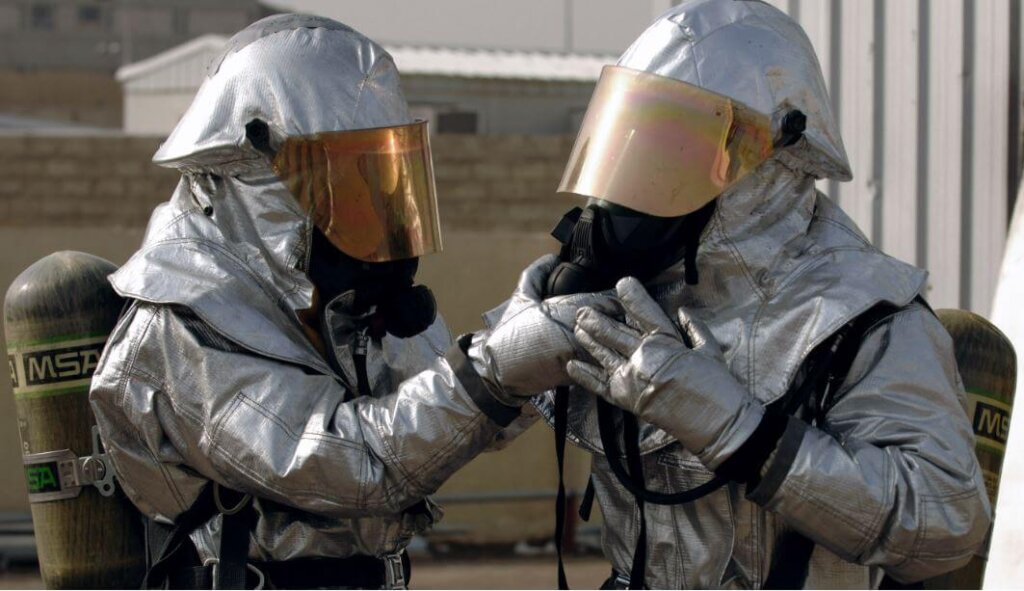Whenever I tell someone that I focus on asbestos litigation, I’m, more often than not, met with the question: “Asbestos still is out there?” Asbestos, from the Greek word asvestos literally meaning inextinguishable, continues to affect and ruin lives … the lives of family members whose wives, husbands, mothers, fathers, sisters, and brothers have died from mesothelioma, the lives of those who presently suffer from mesothelioma and other asbestosrelated cancers and illnesses, and the lives of individuals who still work with the dangerous mineral.
With a latency period of 42.8 years, mesothelioma remains a prevalent death sentence, resulting in more than 3,000 diagnoses in the United States each year. A common misconception about asbestos in the United States is that it no longer exists. In 1989, the Environmental Protection Agency issued the Asbestos Ban and Phase Out Rule of the Toxic Substances Control Act prohibiting “the future manufacture, importation, processing, and distribution in commerce of asbestos in almost all products.” Yet, in a few short years, the regulation was vacated and overturned by the Fifth Circuit Court of Appeals. In 1990, the EPA instituted, under the Clean Air Act, restrictions involving asbestos pipe insulation and asbestos block insulation along with limitations of spray-on application of materials to 1 percent or less. While such actions seemingly represent significant and positive changes, these regulations fail to address the fact that there is no safe level of exposure to asbestos.
Despite its lack of a complete ban on the threatening mineral, the United States’ asbestos usage, for all intents and purposes, is diminutive in comparison to that of other countries. India, the country from which my parents emigrated and in which many of my extended family members continue to reside, has increased its usage of asbestos substantially. Asbestos use in India grows at a rate of 30 percent per year, and shows no signs of letting up.
The scraps of tarp, tin and wood, which provide the most minimal amount of privacy, protection and stability within slums, are being replaced by cement roofs of the inexpensive and indestructible mineral. Visaka Industries Limited represents just one of the country’s methods of profiting off the apparent dependability and safety asbestos provides for those living well below the poverty level. Started in 1985 with the purpose of producing asbestos cement sheets, roofs and textiles, Visaka Industries hails asbestos as “a magic mineral [for which] no other substitute can match its properties.” The company’s 2011-2012 annual report assures investors that there is “no risk, whatsoever, to health” and that there exists “no evidence that people living under asbestos-cement roof[s], or the general public living around asbestos cementroofed buildings or factories producing asbestos cement products have been specifically affected in any manner.” As the second-most populous country in the world, India and its widespread, accepted and underregulated use of asbestos will lead to devastating effects on the future welfare of the country itself and also on the world as a whole.
While it is easy to attribute and pass off its use of asbestos to the nation being a developing country, India no longer mines asbestos but instead imports it. India was once the greatest importer of asbestos mined in Canada, until the last of Canada’s remaining mines ceased operations in 2012. Only as recently as June 2015 has the Canadian government posted a warning on its website stating that the government of Canada “recognizes that breathing in asbestos fibres can cause cancer and other diseases.” Despite a common dismissal of asbestos as a hazard of the past or solely of underdeveloped nations, the mineral continues to assert its presence and harm in developed countries.
My parents’ immigration to the United States primarily was prompted by the well-being of their future children – with regard to their education, opportunity and environment. Nearly 40 years since their move, however, the environment of their grandchildren, children, and selves continues to be plagued by the presence of asbestos. In July 2015, the Environmental Working Group Action Fund released a study revealing that crayons and crime scene fingerprint kits sold to children contained asbestos. These products were not found in toy stores lining the streets of Russia, China, Brazil, Kazakhstan or India, but rather were found in regularly frequented stores in the United States, including Amazon.com, Dollar Tree, Party City and Toys”R”Us. Nonetheless, the United States has yet to issue a ban on asbestos in its entirety.
Will these supposedly insignificant traces of asbestos prove harmful? I guess we will have to wait 42.8 years to find out. Anjali Atul Mehta Smiltins









